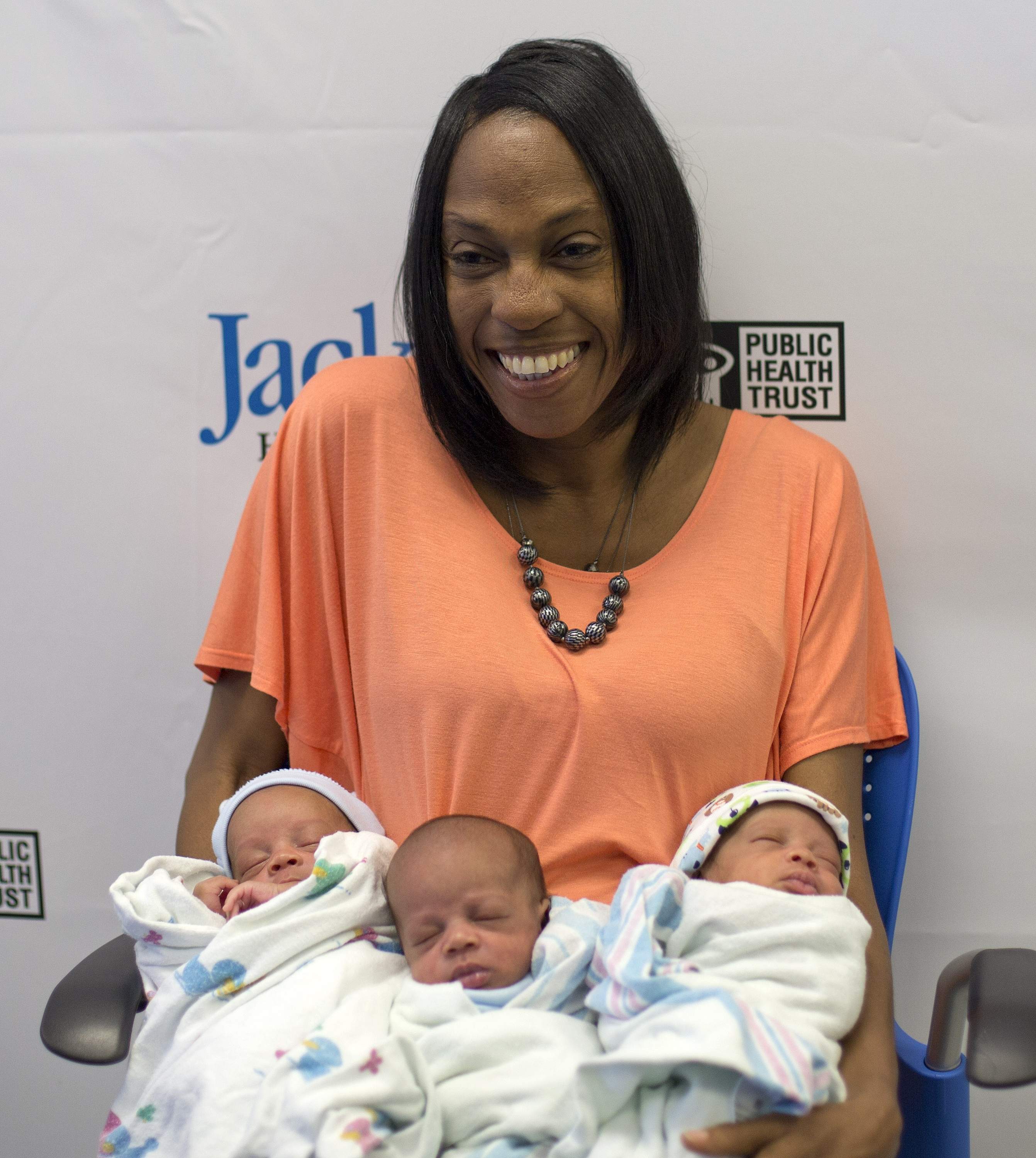 A woman in Florida named Sharon Lewis recently gave birth to triplets at the age of 47 years old. Forty-seven. With nary a fertility pill or treatment to be seen.
A woman in Florida named Sharon Lewis recently gave birth to triplets at the age of 47 years old. Forty-seven. With nary a fertility pill or treatment to be seen.
It’s amazing and rare. According to obstetrician Dr. Salih Y. Yasin, getting pregnant is 1 percent, but to be twins it’s probably 1 percent of that. Triplets is 1 percent of 1 percent of that.
Dylan, Denere and Denard each weighed two pounds at birth and were taken care of by the hospital’s neonatal intensive care unit. Lewis developed high blood pressure at some point during her pregnancy, so her doctors decided to deliver the triplets early, at the tender age of thirty weeks.
I often wonder what it would be like if I were to be pregnant again. Eeek. Actually, I don’t wonder–a shiver passes through my spine and I chase it from my mind. I just turned 42–I’m practically ancient. To be totally honest, I can’t imagine doing it all over again at this age. The swollen feet, the heartburn, the lack of sleep, the food cravings, the muscle soreness, the body changing at the speed of light. Not to mention childbirth, breastfeeding, changing diapers. I’ve been through it all and I made it to the other side (six times, to boot), but I just couldn’t do it again.
I know the big trend in Hollywood is to have your babies later on in life but thanks but no thanks. I had my last child when I turned 33 and that was hard enough. My daughter wrecked it all–my stomach, my hair, my lower back and my ability to sneeze without needing a diaper. I think we should just leave it at that.
Source: Baby center


